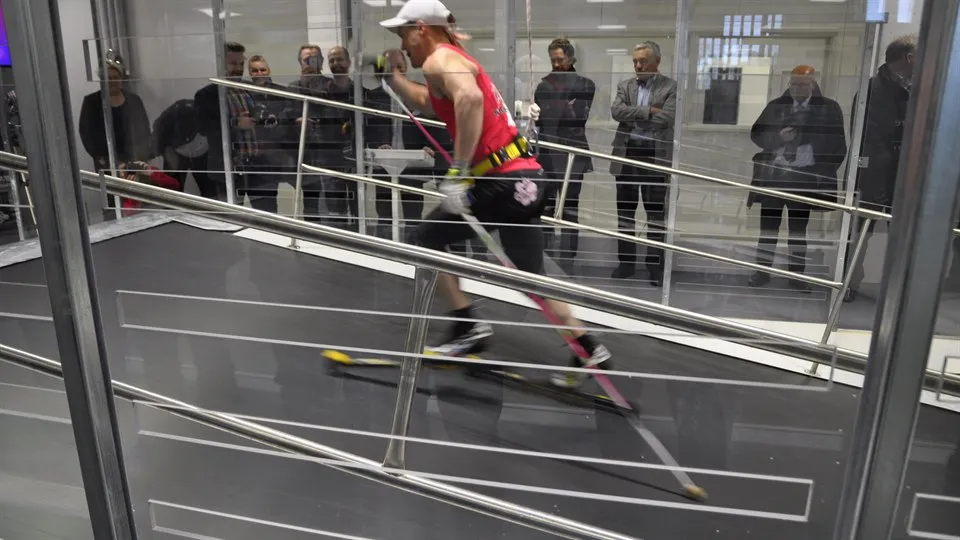Higher wind speed in the wind tunnel
The wind tunnel at Sports Tech Research Centre is being rebuilt to offer even higher wind speeds. With the help of pipes mounted in front of the fan, the wind is concentrated on a smaller area, which contributes to the increase in speed. This enables even more realistic simulations in the future.
The wind tunnel, which also has other climate functions such as temperature and humidity, has been a popular test lab for researchers and companies since its inception. With a unique combination of the advanced climate functions, a huge fan and one of the world's largest treadmills, it enables lifelike simulation in both research and product development contexts.
"We already have high capacity, but what we lack for certain user groups is to be able to generate higher wind speed for everything from speed distances in cross-country skiing to speed skating on skates," says Mikael Bäckström. Centre Director of the Sports Tech Research Centre.
Even in alpine sports, there are increased opportunities to test both speed positions and materials when the wind speed increases.
"We want to test the different wind resistance of alpine suits, where two things in particular are interesting: the position required for the minimum wind resistance, and the equipment itself. There we look at the suit's function, air transmission, fit, surface and construction such as seams and zippers," says Mikael.
From 60 to 457 kilometers per hour
Currently, it is possible to generate speeds of up to 60 kilometers per hour. This is lower than the 60–70 kilometres per hour that skiers reach when they are in a speed position. In alpine contexts, it is also not uncommon to have speeds of up to 110–120 kilometers per hour.
"Based on our calculations, we should be able to reach 457 kilometers per hour in the wind tunnel, but we won't know until we have tested in the lab. We have ordered long pipes with different circumferences ranging between 100-160 centimetres. The different pipe sizes will generate different wind speeds by blocking off the surface of the wind tunnel and releasing a larger amount of air through the pipe, where a smaller diameter generates higher air velocity. The pipes will be replaceable and attached with plates inside the wind tunnel itself," says Mikael.
In addition to applying the wind tunnel's benefits in the sports world, there is potential to test other wind-sensitive objects.
"We want to investigate further areas of use, such as the loads that arise when tents are exposed to strong winds. Then it would be interesting to look at how aircraft, drones and different types of land-based vehicles react. There are many things that can be done if we increase the wind and therefore it is important for us to be able to expand the tool's capacity," concludes Mikael.
Reconstruction is planned for the spring and then the various test phases will begin. In a few months, the researchers hope to be able to utilise the new capacity of the climate tunnel in various projects.
